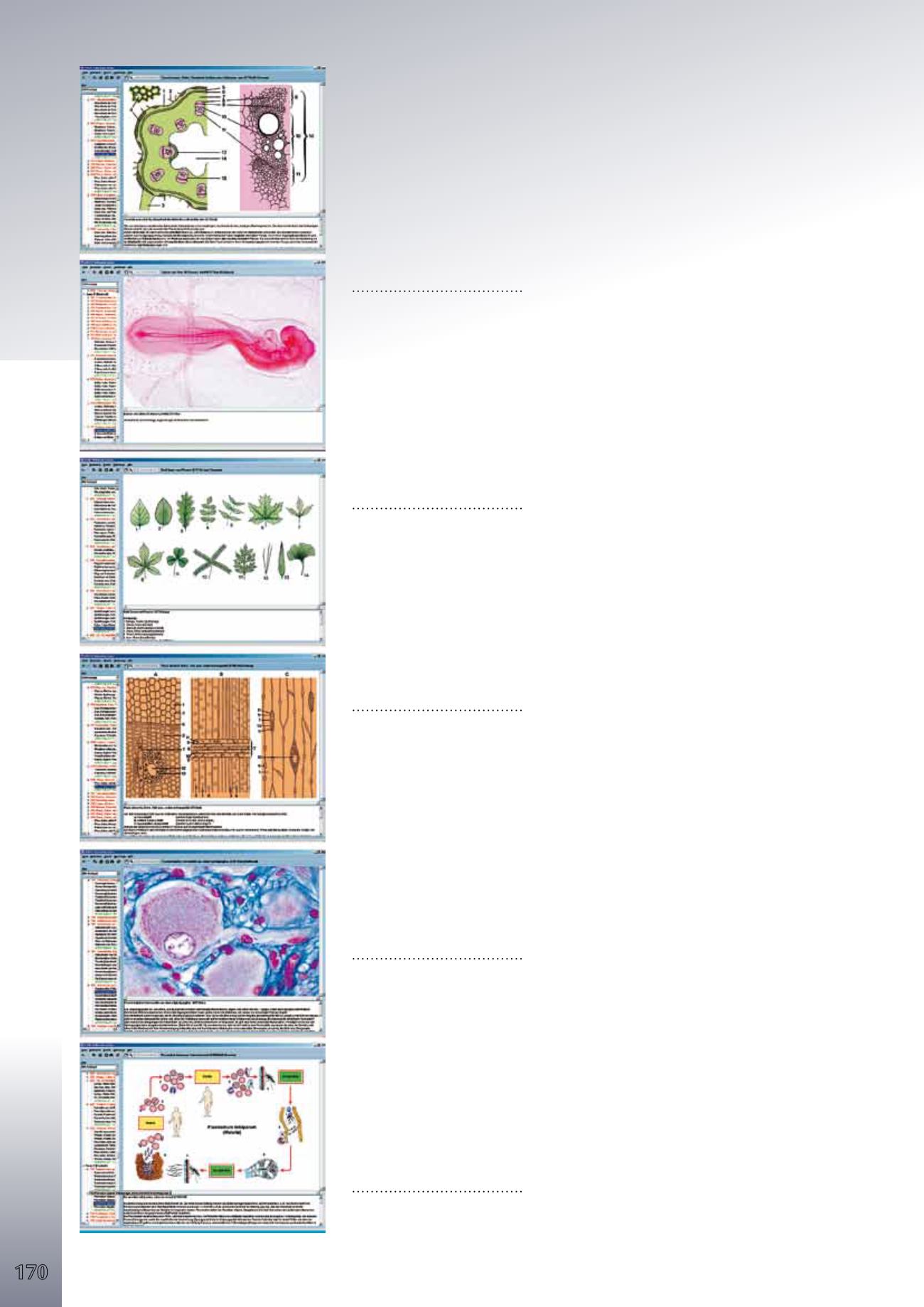
170
3 B S c i e n t i f i c ® B i o l o g y
Sof tware
Zoology in the Classroom
Morphology, the study of the structure of organisms and of the relationship among their constituent
organs, together with taxonomy, the science dealing with the relationships among organisms and
their classification into a hierarchical system, are closely associated. Without morphology and taxono-
my, biology could not be conducted in a meaningful way. When taught separately, both are tedious
subjects for nearly every student. But if the teacher puts structure, function and relationship into a
meaningful context, analyzes these factors and shows how a taxonomic unit propagates throughout
the available habitats, i.e. when radiation takes place, and when it finally becomes evident that a cer-
tain “blueprint” has been “invented”, these otherwise dry subjects gain life and become interesting.
This CD offers some interesting insights into some problems regarding structure and function within
the context of animal taxonomy. The CD contains a wealth of colour photographs, illustrations and
detailed diagrams of basic body structures of the animal classes, as well as micro and macrophoto-
graphs that may be enlarged to full-screen size or printed at the touch of a button.
9982-1004292
The Wonder of the Plant Cell
Few things in living nature are so multifaceted as the forms that plant cells can adopt. Depending
on their function, they can be symmetrical and smooth-walled filling cells, repeatedly-branched tri-
chomes, star-shaped, ring-shaped, corkscrew-shaped or reticular vessel cells, shut-off cells, storage
cells with substances including crystals, woody cells, pollen cells with superficial features characteris-
tic to each plant, etc. Even the leafless plants stand out for their multiplicity of forms: unicellular and
multicellular green algae, blue algae, golden algae, fire algae, and particularly the diatomea, with
their wildly varying shell forms possessing a remarkable aesthetic appeal.
9982-1004293
Botany in the Classroom
The purpose of this CD is the same as that of CD 9982-1004292, but focused on botany. Plant derived
foodstuffs form the basis of human nourishment. Given that modern students enjoy ever diminishing
opportunities to observe or take part in sowing, cultivating, harvesting and utilization of crops, this
CD attempts to fill that void. The most important crops are listed, noting their flowering periods in
Roman numerals. Pictures of plants and data on their provenance, history, cultivation and utilization
provide the teacher a wealth of material for a varied and interesting botany lesson.
9982-1004294
Biology of Flowers and Fruits
One of the identifying features of higher plants is the occurrence of flowers and fruits, whose complex
structure under the microscope makes for interesting observations. Some plants, such as conifers,
build male and female germinal elements in different flowers. The formation of seeds and fruits is
determined by the different modes of dispersal, such as by means of edible fruit flesh or of dehydra-
tion-resistant grains. Flower biology or ecology examine and describe the interactions occurring in the
pollination process between flowers and their non-living and living environment. Among the external
forces that make pollen dispersal possible are wind, water and transportation by animals. Of these
three, pollination through animals ranks as the uppermost method, being the most effective and
common of all.
9982-1004295
Crop Pests and Controls
Since man started to practice agriculture, he had to ”defend“ his crops against damaging organisms.
Often, a large part, if not all, of a harvest is lost to harmful plants or pests, mostly caused by different
types of fungi. For their multiplication and propagation, these fungi produce colossal amounts of ex-
tremely resistant spores. Exact knowledge of the way of life of these harmful plants is necessary to
combat them effectively. The pictures, showing crops affected by pests, will be of interest to hobby
gardeners and farmers alike. The CD deals also with a very promising aspect of global environmental
protection: biologic pest control. Using well known, easy to follow examples, the subject is explained
and its goal made more accessible.
9982-1004296


